A couple of weeks ago, I got an interesting message in my e-mail inbox. Someone at LuckyGunner.com had read this weblog and wondered if I’d like to review ammunition that they’d send me.
Someone wants to send me ammunition for free, and all I have to do is shoot it and then write about it? I’ll spare you from a description of my happy dances, but I wrote back immediately to say, “Yes!” and, “Here’s a list of everything that you can send me.” Some may worry about whether I’m being paid to write this, so I’ll dispose of that subject here. I have only been sent twenty rounds of the named ammunition and was not paid.
With that out of the way, it is with great pleasure that I now write about my first batch of ammunition for review: Sellier and Bellot’s .30-’06 Springfield Exergy cartridges. Sellier and Bellot is a Czech company (now owned by an outfit from Brazil) that I’ve known as a maker of decent and cheap ammunition for practice–in other words, they have already appealed to the cheap bastard in me. Usually, their rounds have a red lacquer seal on the primer, an easy sign that these cartridges are going to do the job and not cost a lot of money.
But the Exergy round is aimed at a higher class market. Have a look:
The bullet is a 180 grain, solid copper round with an aluminum tip to aid in expansion. Does it work? Be patient, Dear Reader.
First, here are the details about the environmental conditions on the day of testing–2 July 2012 in Berryville, AR:
Temperature: 90 degrees Fahrenheit
Pressure: 30.11 inches of mercury
Humitidy: 40%
Wind: 9 mph out of the southwest
(Details from Weather.com.)
Berryville’s elevation is 1,200 feet.
What do we see here? It was a hot day. That will also come into the discussion a little later.
All right. After getting the scope back into alignment with some military surplus rounds,
I moved on to running five of the Exergy rounds through my chronograph, a CED M2. The rifle is a BRNO (appropriate, that) vz. 24 that was rechambered for .30-’06. The barrel is 24 inches long.
The results:
1st round: 2,736 feet per second
2nd round: 2,777 ft/sec
3rd round: 2,812 ft/sec
4th round: 2,769 ft/sec
5th round: 2,777 ft/sec
That falls solidly into the good enough category for my shooting. If I can hit a two-liter soda bottle at a hundred yards, I’m happy. I was even happier doing this:
Taking these:
and getting this:
Now why did I do that? ‘Cause it’s fun, Bubba. But really, I wanted to test the expansion of the rounds. Down in south Texas, the fellow who writes The Box O’Truth does a fine job with his fancy setup, but here in Arkansas, I used the Cat Litter Tub O’Truth, the cheaper and seedier version. The tubs sat twenty-five yards from the firing line in a straight column. I aimed for the center of the front tub. Have a look at the results:
The first round split open two tubs (each a foot in length), and landed in the first. The second bullet also smashed two tubs, but came to rest in the second. In addition, its shockwave cracked a third tub. At that point, I had two tubs left, and I tried to capture a third bullet, but it blasted through and screamed on down range into the dirt.
Note the rapid expansion. The first went from .30 caliber to .90 and sent a burst of energy into another foot of water. The second bullet expanded from .30 to .80. It and the third round penetrated two tubs and sent damage beyond.
Why does that matter? Have a look at this fellow:
That’s what the Exergy round is for. The bullet needs to enter, do its job, and stay put. Given the performance that I saw on water tubs, I’m thinking that this bullet will do just that.
I do have to report one possible problem:
I felt gases coming back when I fired that cartridge. You can see what happened to the primer. After doing some checking, though, I believe that this came as a result of the temperature on that day. Hotter weather means higher pressure in the chamber.
Time for the conclusion. I give Sellier and Bellot’s .30-’06 Exergy rounds a solid B. It’ll do its job if you do yours. Buy yours here.

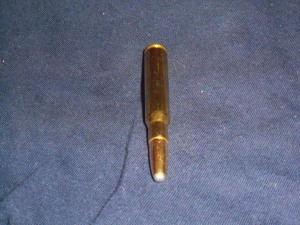
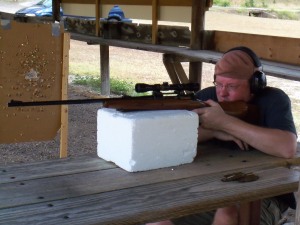
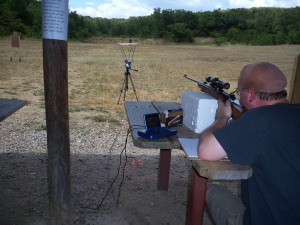
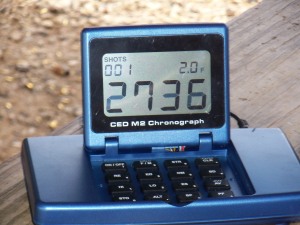
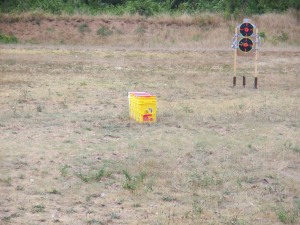

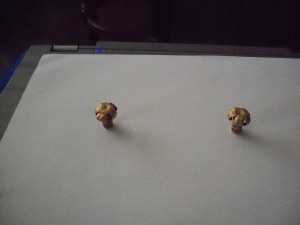

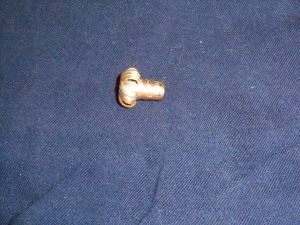


Very nice! Sometime, though, you’re going to have to give us the rundown on your Tub o’ Truth. You went over that a bit too quick for my taste.
By the way, if you should ever need to test expansion of handgun ammunition, here’s what the FBI taught us to use back in the dark ages. Fels-Naptha soap bars. Cobble together a wooden rack to hold them, one after another. Think of a Cassette Tape rack. Put in up to 10 bars. Fire. If the projectile penetrates 4 bars, it’s acceptable (barely). If it goes through more than 8 or 9 bars, it’s excessive. Also, the holes in the soap will be a reasonable approximation of a human’s wound channel and, yes, you can recover the expended projectile for examination. Not as good as ballistic gel, but a lot cheaper and easier to get.
I added a bit more detail. See if that’s what you wanted.
Wow, Greg! Great post on your testing. I’ll admit, I know nothing of guns, but I was impressed with the detail and your photos, and I especially liked the humor you tossed in.
But, since you know me as a fellow critique-er, I can’t pass up a critical comment. I would have liked more showing and less telling of your happy dance. 🙂
Pingback: What Your Armory Needs | Greg Camp's Weblog
Thank you for this review, as it is very difficult to get any opinions on this ammo on the web.
However how about accuracy?
I need to admit, that I have been very disappointed trying to obtain reasonable results with 11.7g S&B exergy with my cz550 lux 308 win. That was terrible.
Moving to a lighter and basic bullet (9.7g, SPCE also by S&B) improved the accuracy completely.
Hoping to get access to useful lead-free bullet, I look forward to a recently announced new version of the exergy – the TXRG Blue bullet, 10.7g.
I really hope this one will be accurate enough.
I don’t have the specific grouping data, but it performed consistently enough that I’d expect good results.